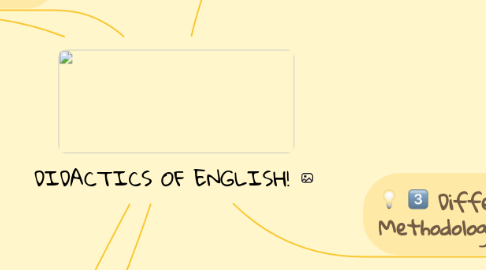
1. The audio lingual method.
1.1. The objective of audiolingual method is accurate pronunciation and grammar, the ability to respond quickly and accurately in speech situations and knowledge of sufficient vocabulary to use with grammar patterns.
2. TPR (Total Physical Response).
2.1. Created by James Asher. The TPR method is characterized by interactions that young children experience with parents or other adults combine both verbal and physical aspects.
3. Didactics Principles!
3.1. Sympathy
3.1.1. Feel together
3.2. Clarity
3.2.1. Teacher must be able to state clearly where he will go, create AIMS!
3.3. Tempo
3.3.1. from a position of childhood to a position of adulthood; is of the essence, there is always tempo.
3.4. Dynamism
3.4.1. It's concerned with the quality of the attitude, the enthusiasm.
3.5. Balance
3.5.1. For teacher it's effective use, as far as form is concerned it's variation.
4. Methods and Approaches.
4.1. Natural approache.
4.1.1. In 1997 Tracy Teller, created the Natural Approach, as a new proposal of teaching language and language acquisition.
4.2. Suggestopidia.
4.2.1. George Lozanov was the creator of this method. It is used in different fields, but mostly in the field of foreign language learning. That by using this method a teacher's students can learn a language approximately three to five times as quickly as through conventional teaching methods.
4.3. CLL approache.
4.3.1. The CLL approach was developed by charles arthur curran. This method refers to two roles: that of the knower (teacher) and student (learner).
4.4. Grammar translation method.
4.4.1. The grammar translation method is a method of teaching foreign languages derived from the classical (sometimes called traditional) method of teaching Greek an Latin.
5. Differences between Methodology and Strategy!
5.1. Strategy:
5.1.1. Learning strategies is a teacher of learning activities undertaken with the aim of the learning process that takes place in the classroom can achieve (goals) to effectively and efficiently.
5.2. Methodology:
5.2.1. Method can be considered as a way of learning that must be taken to realize the plan that has been a teacher in real and practical activities in the classroom to achieve learning activities. Thus, the strategy is “a plan for achieving goals” while the method is “a way for achieving goals”.

